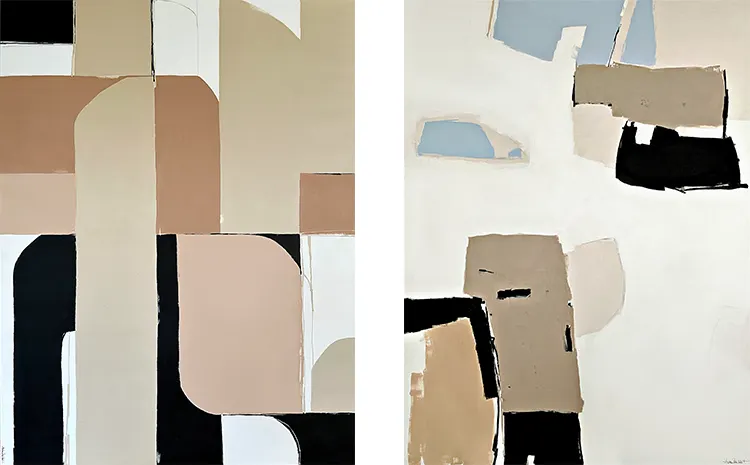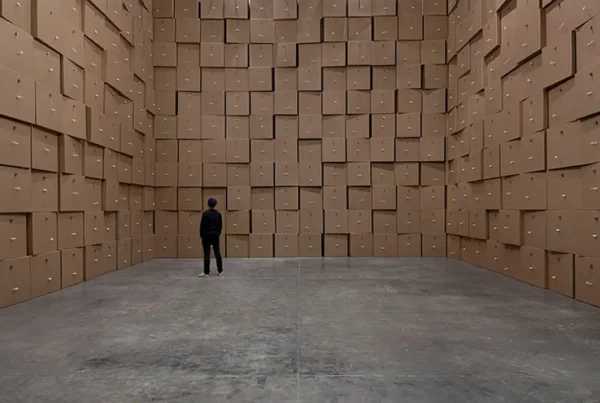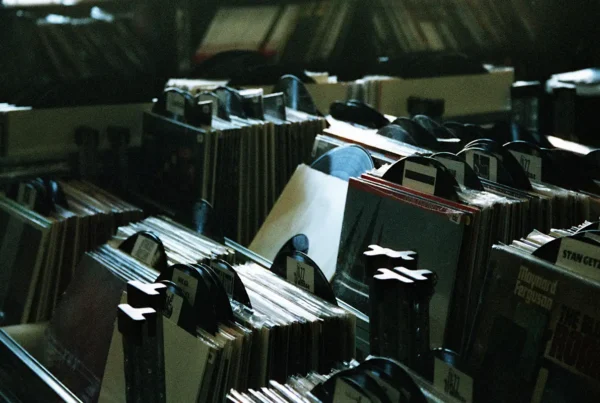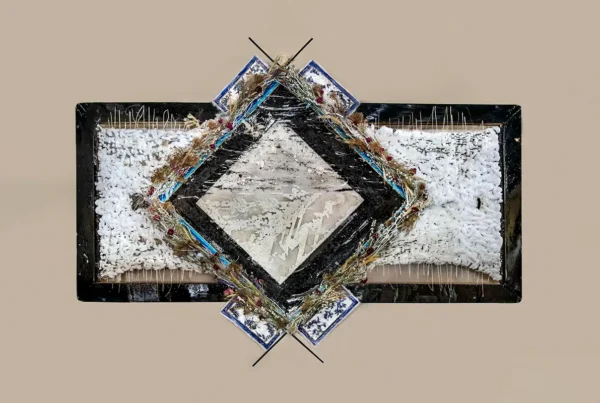“It’s a step forth, two steps back, pause… seeing something I haven’t seen before. It’s a constant conversation until the final brushstroke.”
A Journey from Melody to Canvas
Andrea Reichhart’s artistic path is anything but conventional. A professional jazz singer and songwriter for over 25 years, she discovered a new creative dimension when the pandemic temporarily silenced live music. Based in Germany, Reichhart has since established herself as an abstract artist, crafting bold, minimalist compositions that reflect the same spontaneity and emotional depth that define her musical performances.
Her background in jazz deeply influences her approach to painting. Having studied jazz vocals at the Conservatory of the Arts in Amsterdam, she developed an intuitive, improvisational style—qualities she now brings to her visual art. Just as a jazz musician responds to the nuances of a live performance, she engages with her paintings as an evolving conversation, embracing the unexpected turns and revelations that arise during the creative process. This ability to remain present, to trust instinct over rigid structure, allows her work to maintain a sense of authenticity and raw energy.
Although Reichhart initially explored painting in her teenage years and even considered studying fine art, music took precedence. Yet, when she picked up the brush again decades later, it felt like a natural continuation of her artistic voice. She recognizes the serendipity of this evolution, acknowledging that jazz not only shaped her understanding of expression but also gave her the tools to approach painting with confidence and curiosity. Her art, like her music, is an invitation to experience emotion beyond the confines of the ordinary, encouraging viewers to connect with the rhythm and movement within each composition.
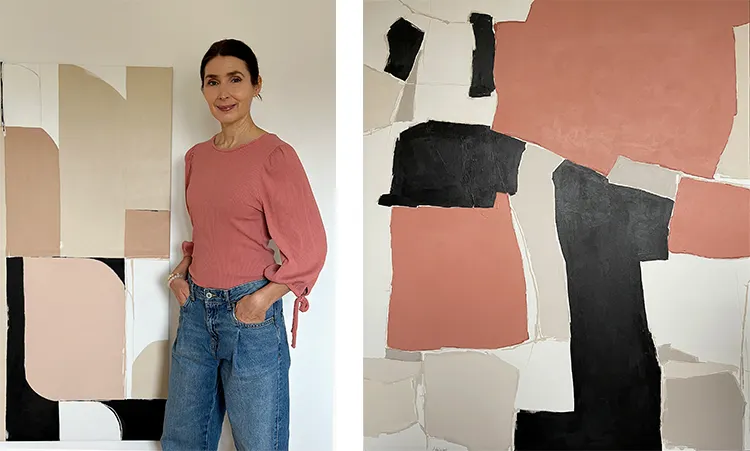
Andrea Reichhart: The Language of Form and Space
Reichhart’s paintings are deeply influenced by nature’s organic simplicity and the imperfect beauty found in raw, unfiltered forms. She gravitates toward minimalism, favoring bold yet uncluttered compositions that emphasize space, contrast, and movement. Each brushstroke carries intentionality, echoing the way a single musical note can hold weight and resonance within a melody.
Black plays a particularly significant role in her work. To her, it is more than just a color—it is a statement of depth, character, and elegance. A singular, assertive black brushstroke can define an entire piece, much like a well-placed pause in a jazz performance amplifies the surrounding notes. She embraces fluidity in her compositions, allowing shapes and lines to unfold naturally while maintaining a keen awareness of balance and presence. This delicate interplay between spontaneity and control is what gives her paintings their distinctive energy.
For Reichhart, painting is a conversation between the artist and the artwork. She describes the process as one of continuous observation, stepping back to reassess, shifting perspectives, and allowing intuition to guide her hand. It is never a straightforward path—sometimes it requires undoing, reworking, or sitting in silence until the next step reveals itself. This willingness to remain open to change mirrors the improvisational spirit of jazz, where the most compelling moments arise from an artist’s ability to listen and respond in real time.
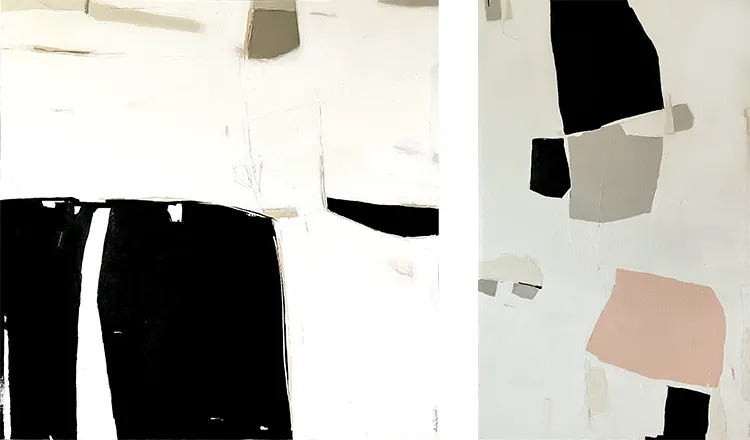
Crafting a Creative Environment
Creating art requires a balance between immersion and awareness, something Reichhart has learned to cultivate through years of performing and composing music. She thrives in a workspace that is both organized and inviting, where she can fully surrender to the creative process without external distractions. Her dogs provide a grounding presence, reminding her to take necessary breaks, step outside, and regain perspective—an essential rhythm that fuels sustained inspiration.
Despite her ability to slip into a state of creative flow, Reichhart acknowledges the modern challenges of maintaining focus. Social media and digital distractions often threaten to interrupt the momentum of her work, particularly during moments of lower inspiration. She combats this by aligning her studio hours with her natural biorhythms, working during her peak creative periods and stepping away when necessary. Understanding her own energy cycles has been key to maximizing productivity without forcing creativity.
Her artistic influences span both the worlds of music and visual art. Legendary jazz vocalists such as Ella Fitzgerald, Anita O’Day, Al Jarreau, and Kurt Elling shaped her understanding of phrasing, tone, and emotional storytelling. Having had the opportunity to study under the great Mark Murphy, she internalized the importance of expression and nuance, elements that now translate seamlessly into her painting practice. On the visual side, she draws inspiration from abstract expressionists like Helen Frankenthaler, Mark Rothko, and Pierre Soulages, as well as numerous contemporary artists whose work she follows online. These influences provide a foundation, but ultimately, it is her own voice—refined through years of artistic exploration—that defines her work.
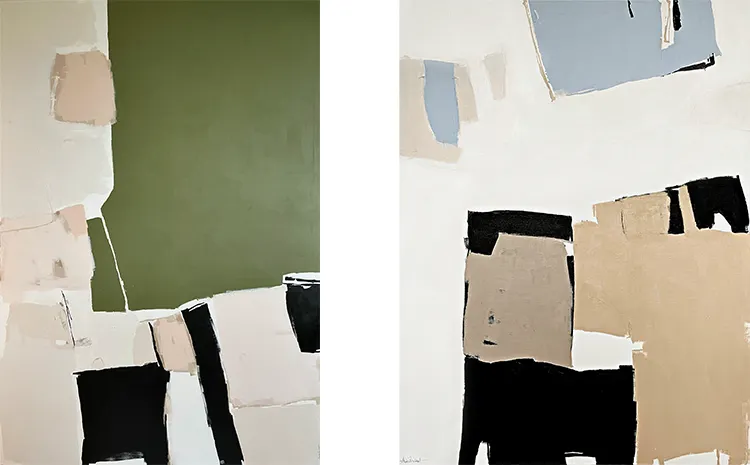
Andrea Reichhart: Painting as a Musical Composition
Reichhart’s creative process is a continuous search for authenticity, much like composing a jazz piece or delivering an emotionally charged vocal performance. Her shift from pencil and charcoal sketching to working with acrylics on canvas was a journey of discovery, requiring trial, experimentation, and a deep understanding of what resonated with her artistic identity. The breakthrough came when she embraced a limited color palette, allowing form and texture to take center stage. This restraint, rather than being a limitation, became a source of strength, enabling her to refine her vision with clarity and purpose.
A deep admiration for Roman architecture and Mediterranean landscapes often finds its way into her work, whether through structural compositions or an underlying sense of timelessness. Visiting the Sistine Chapel and witnessing Michelangelo’s frescoes left a lasting impression, reinforcing her belief in the enduring power of great art. While her style is distinctly modern, she draws upon these historical influences to create pieces that feel both contemporary and timeless.
Looking ahead, Reichhart dreams of expanding her creative space—a studio filled with natural light that doubles as a gallery where she can host exhibitions and invite guests into her artistic world. She envisions merging her two passions, performing jazz at her own vernissage, where music and painting intertwine in an immersive sensory experience. For her, art is not confined to a single medium; it is a fluid expression that transcends boundaries, allowing sound and form to communicate in ways that words cannot.
